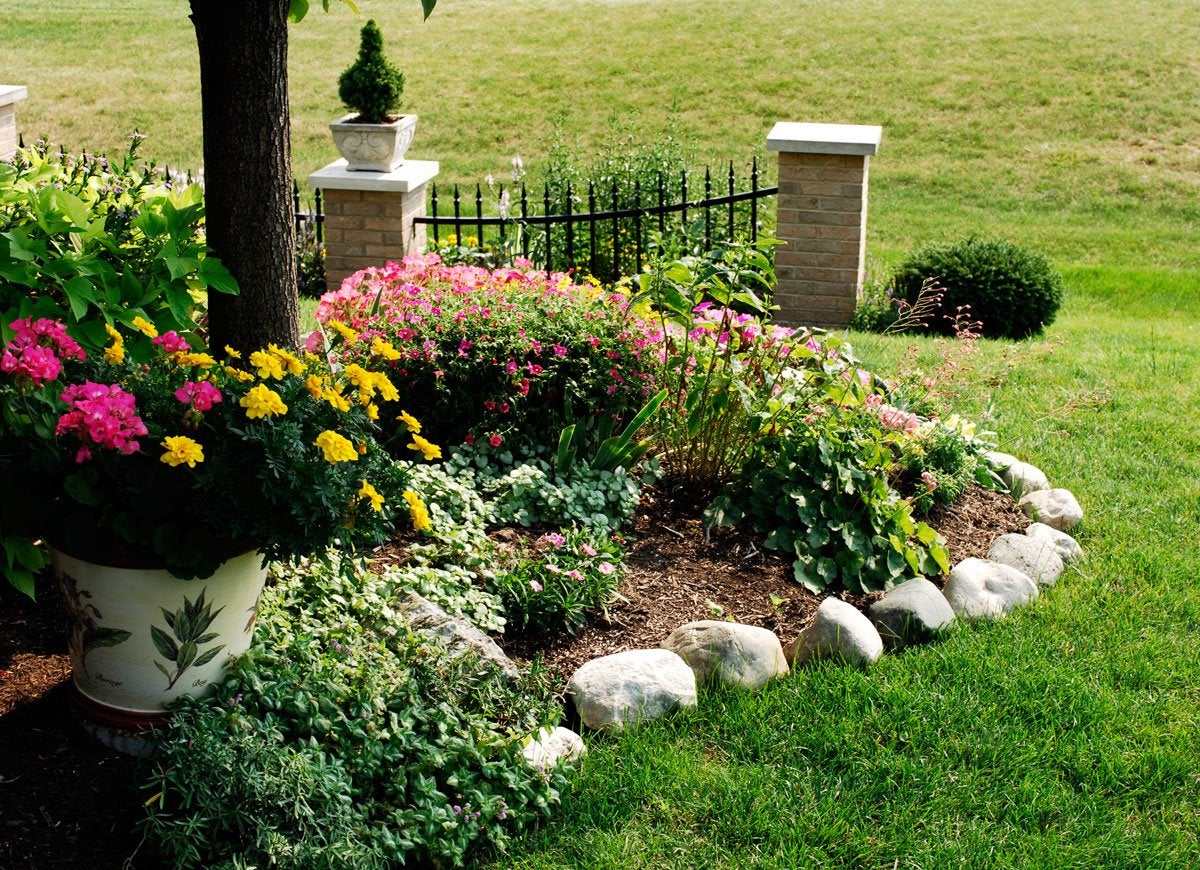We may earn revenue from the products available on this page and participate in affiliate programs. Learn More ›
Test the Soil’s pH

After a summer of heavy growth, your soil’s nutrients may be tapped out. Fall is a good time to take stock of which vital minerals your soil is missing and what it might need for the coming season. Test your soil’s pH, and then use the test results to determine what kind of fertilizer, if any, you may need to bring your soil back into a healthful balance.
Fertilize the Lawn

Lay the foundation for a lush spring lawn by fertilizing cool-season grasses in the fall. Spread fertilizer in October and November to stimulate root growth before the ground freezes. By strengthening roots now, you’re helping your lawn survive a harsh winter and promoting rapid growth come springtime.
Cut Down the Grass

During the summer, you want to keep your lawn high to shade out weeds and hold in water, but come fall, cut your grass short to reduce the risk of snow mold, a fungal disease that kills grass as ice and snow melt. Give the lawn a good trim in late fall, and you won’t have to do it again until spring.
Reseed the Lawn

If you’ve got bare patches in your lawn, address them now! Early fall is a great time to sow cool-season grass seed because the soil is still warm and rain is plentiful—the ideal conditions for grass to take root so it can grow lush in the spring.
Related: 10 Remedies to Rescue a Dying Lawn
Pull Out Tired Plants

If you want to change the look of your garden, fall is the time to pull out your old plants and start with new perennials. Fall’s milder temperatures are not only more comfortable to work in, they’ll also give new shrubs and landscaping trees time to take root before the ground freezes.
Related: 30 Low-Maintenance Plants for Your Easiest Garden Ever
Cover Flower Beds with Leaves

If you can stand it, leave those fallen leaves in your flower beds! While many homeowners don’t love the look of leaf-covered flower beds, the organic matter can actually insulate plants from ice and snow, keeping them healthy as the months get colder.
Related: 10 Foolproof Flowers Anyone Can Grow
Edge Your Flower Beds

While your soil is warm and moist—and certainly before the first frost—take advantage of the nice weather and pleasant working conditions to refine the borders of your flower beds or add decorative edging to gardens. Bonus: Doing it now, as opposed to in the spring, means you’re less likely to disrupt fragile new growth and seedlings.
Cut Back Shrubs

If you want to trim back your existing shrubs, now’s the time. Do the job in early fall, and new growth will have the chance to harden off before the first big freeze comes, so your shrubs will be in better shape come springtime.
Trim Trees

It’s easier to identify dead limbs while your trees still have leaves on them, so these early days of autumn are a great time to trim back dead branches before they get covered with ice and snow—weight that could potentially cause them to break off, posing a safety issue for your home and family.
Related: The 15 Best Trees for Any Backyard
Clean the Gutters

Most trees don’t drop too many leaves, sticks, and debris during the summer, but by the end of fall your gutters will probably be full. Take the time now to clear out clogged gutters (hire a professional if your home is more than two stories tall) to prevent ice dams in winter or overflowing gutters come spring.
Related: 40 Tasks Homeowners Should Finish Before the First Frost
Pick Up Sticks

As fall storms cause leaf-heavy limbs to drop, pick up downed twigs and branches. Store the wood under a covered structure to dry out (not in an attached garage, though, where it can attract termites), and when the wood’s ready, use it to start a season of crackling fires in your fireplace.
Fill Pathway Cracks

When water gets inside small cracks in paved pathways or other garden accents, freezing temperatures can turn that moisture to ice, further widening the cracks. Take some time now to fill the gaps and stave off worse damage.
Related: 7 Thrifty Designs for a DIY Walkway
Stock Up on De-Icer

Don’t wait until the first big ice storm to get the supplies you need to keep your sidewalks and walkways clear and safe. Beat the rush by stocking up on salt-free de-icer, and you’ll be ready when the cold weather comes.
Autumn Upkeep

Take the work out of yard work with these smart hacks to speed things up and with these helpful buys that will boost your curb appeal. You’ll be happy you took care of these chores in the fall when you see how great your lawn looks in the spring!

Our Best Advice for Beginner Gardeners
We’ll help you set up your first garden—whether that’s a few pots on your patio, a raised bed, or an in-ground plot out back—and select the right plants for your soil and region.
